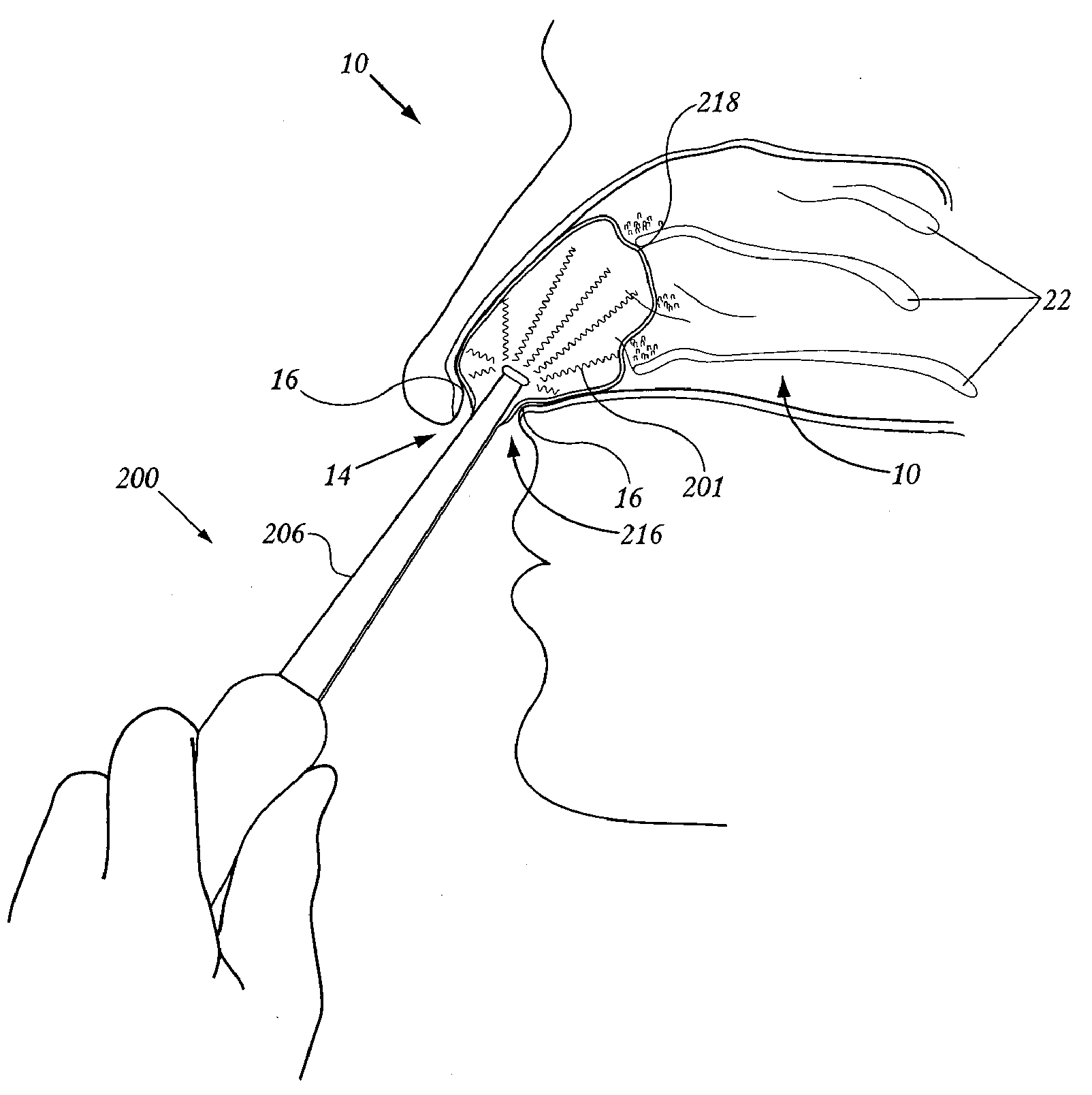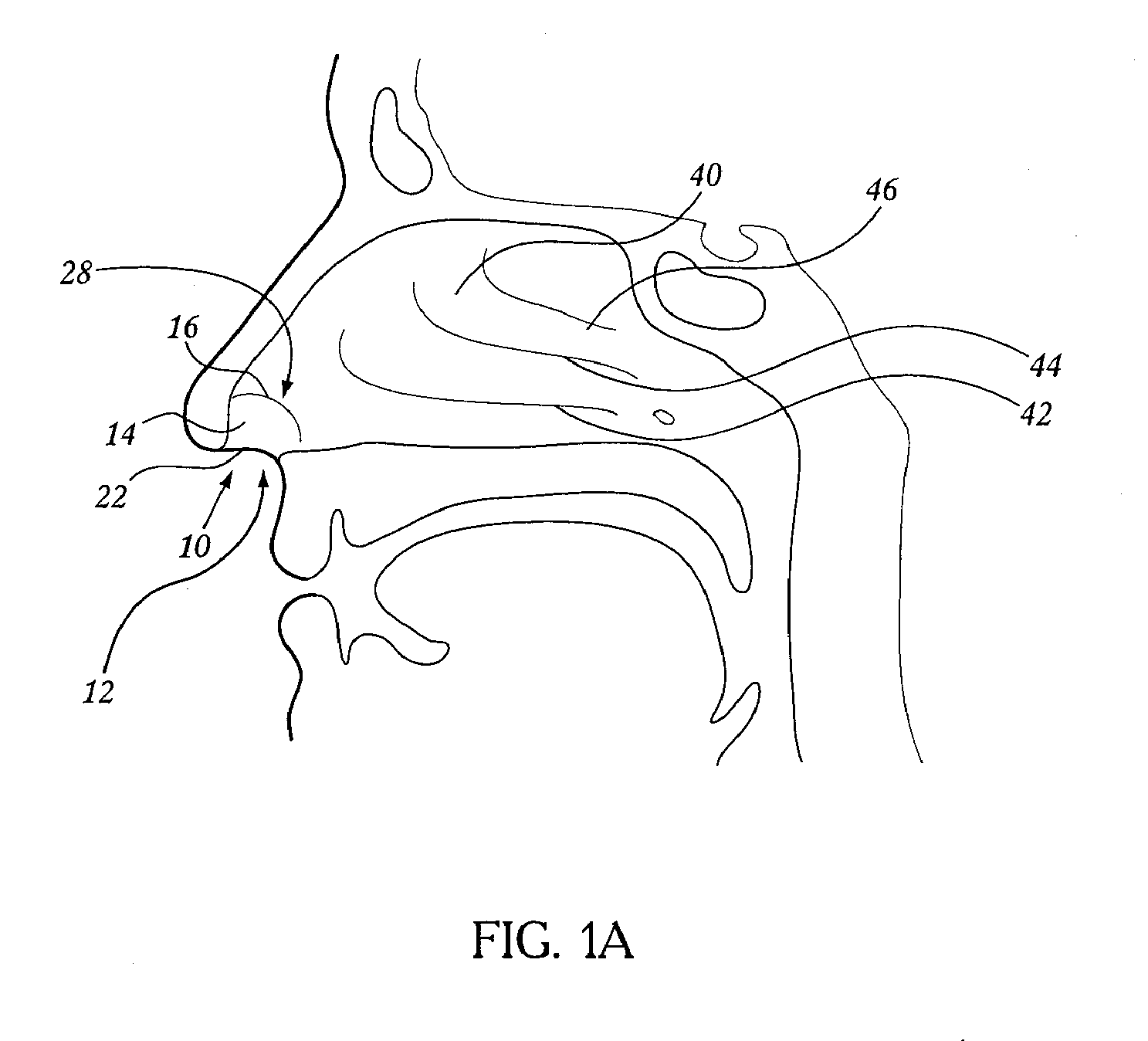Devices and methods for targeted nasal phototherapy
a technology devices, which is applied in the field of targeted nasal phototherapy, can solve the problems of chronic infections, 90,000 deaths, and difficult control of many diseases
- Summary
- Abstract
- Description
- Claims
- Application Information
AI Technical Summary
Benefits of technology
Problems solved by technology
Method used
Image
Examples
example 1
CLINICAL EXAMPLE 1
[0157]Three minutes of rhinophototherapy was applied to the nostril of a patient on consecutive days (days 1 and 2) using a rhinotherapy tip and similar spectrum as is taught by Kemeny et. al. in patent application Ser. No. 10 / 440,690. Examination by speculum and nasal endoscopy prior to the first therapy revealed normal appearing nasal cavity including the transition zone (limen nasi) region and the inferior turbinate. By day 4, “dryness” was encountered by the patient. Repeat examination of the nasal cavity on day 4 revealed a hyperproliferative response at the region of the vestibular limen manifest as a “crusting.” The inferior turbinate region and remainder of the nasal respiratory mucosa continue to appear normal.
example 2
CLINICAL EXAMPLE 2
[0158]In a subsequent experiment in the same patient, the same rhinophototherapy dose was applied through a tip with a balloon placed around the outside with the rhinophototherapy tip within the balloon. Ten milliliters of saline was placed in the balloon after the balloon was inserted in the nasal cavity at the region of the vestibular limen. The therapy device was then pivotable around the nasal cavity easily and without any discomfort to the patient. Two treatments were applied on sequential days. The patient did not complain of dryness on day 4 or any subsequent day. Endoscopy of the vestibular region of the nasal cavity did not reveal any crusting or other abnormalities of the nasal cavity.
example 3
CLINICAL EXAMPLE 3
[0159]Three minutes of rhinophototherapy was applied to the nostril of a patient on consecutive days (days 1 and 2) using a tip adapted and configured to control depth. This tip has a depth gauge and a stop attached to it which prevents movement past the prescribed depth and also importantly prescribes a minimum depth to keep the device in order to position it past limen region and transition zone. The depth of the depth gauge is adjusted based on a distance of the vestibular limen from the entrance to the nostril; one example of the interface for the depth gauge is the bridge of the nostril. The depth gauge provides a haptic indicator of where the device should be placed; otherwise, as in the example 1, the device can be applied too deeply or too shallow in the nose of the patient and the operator cannot judge where to place the applicator while applying the therapy. In this example, phototherapy was applied to the nose of a patient for three minutes on consecutiv...
PUM
 Login to View More
Login to View More Abstract
Description
Claims
Application Information
 Login to View More
Login to View More - R&D
- Intellectual Property
- Life Sciences
- Materials
- Tech Scout
- Unparalleled Data Quality
- Higher Quality Content
- 60% Fewer Hallucinations
Browse by: Latest US Patents, China's latest patents, Technical Efficacy Thesaurus, Application Domain, Technology Topic, Popular Technical Reports.
© 2025 PatSnap. All rights reserved.Legal|Privacy policy|Modern Slavery Act Transparency Statement|Sitemap|About US| Contact US: help@patsnap.com



